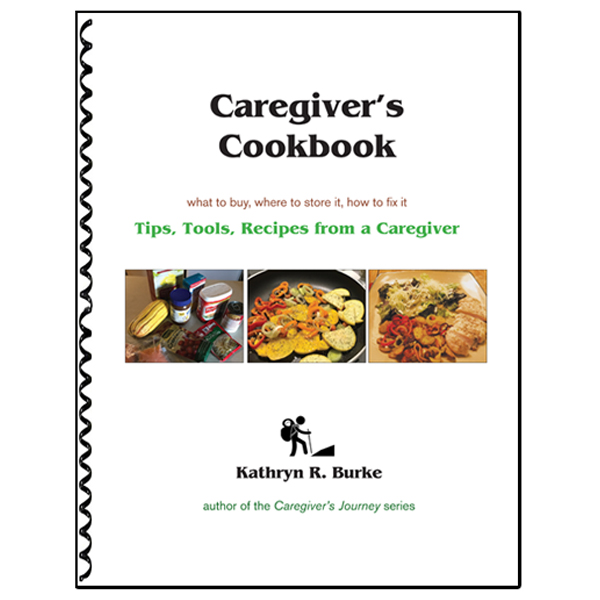 .
.
Food and Caregiving Companionship
Excerpt from The Caregivers Cookbook
[Montrose Daily Press | May 2018 | Kathryn R. Burke] I grew up in a family where we all ate supper together. No cell phones, iPads, and iPods; we actually talked with one another—face-to-face. Imagine that! And, we looked forward to that time of the day when we could come together as a family and share the day’s experiences. That tradition continued as I raised children of my own. Later, when faced with the increasing demands of a spousal caregiver, I was grateful to be able to continue making food a wonderful source of coping and companionship.
It begins with purchasing food. You can’t eat it until you buy it, and for some of us, grocery shopping, is a chore to be dreaded, avoided, and usually done in a rush. It doesn’t have to be this way! Grocery shopping can be a pleasure trip if you plan ahead and take the time to enjoy the experience once you get there. All those beautiful food displays…the enticing aromas from the bakery department…those roasts, the baked chicken, the deli…oh my! Your mouth waters when you think of what you could do with all that lovely food.
Yes, but if you buy it, will they eat it when you get it home? They (probably) will—if you make out the list together and plan ahead for meals that include things people like. (And, maybe sneak in a few things they don’t like—I hide spinach in omelettes and prepared ‘blended parrot’ for my husband, which is a combo of colorful (healthy) sautéed veggies. My kids thought asparagus was ‘baby trees.’ If they ‘name’ it, they are more likely to eat it.
When you get it home, instead of lugging the bags in by yourself, and complaining about it, enlist the aid of those you care for. Let the kids help carry the bags. Let mom or grandma sort and put away. Let hubby haul, and if he is using a walker, like mine was near the end, let the walker to the work. Do you know a walker can fit three cloth bags on the seat, and a wheelchair will carry five or more?
When it’s time to prep and prepare, make it a companionship activity. Let them help wash, chop, bag, put things in freezer bags or storage containers. One woman told me, “I don’t want him in the kitchen; he just gets I my way!” So, put him at the dining room table with a cutting board and a paring knife and give him some veggies to chop up. “Mooommm, I don’t like celery.” Put some chocolate peanut butter on it, and that tune soon changes. “Oh, sweetie,” says your mom, “We never did it that way.” Then, let her show you ‘the way’ she did it, and do the fixing.
Preparing and cooking a meal is a great way to have a conversation, bring back pleasant memories of family meals, maybe eating out, or favorite foods while growing up, or in the case of a parent, cooking for the family. It’s an opportunity for companionship. Don’t shut them out; let them in.
Over the years, as wife, mother, grand daughter, and Caregiver, I have found food provides a strong, cohesive base of Caregiving Companionship for me and my family. Shopping for food, putting it away, planning meals, fixing food together, and enjoying sitting down together to eat it has given us hours of pleasure and ‘together time.’
Kathryn R. Burke an author, publisher, public speaker, and facilitator of the Western Colorado Lewy Body, Alzheimer’s and Dementia Caregivers Support Group. Her Caregiver’s Journey books, Navigating the Path, Building Your Care Team, and The Caregiver’s Cookbook are available from San Juan Publishing. as are other books she has published about caregiving.


